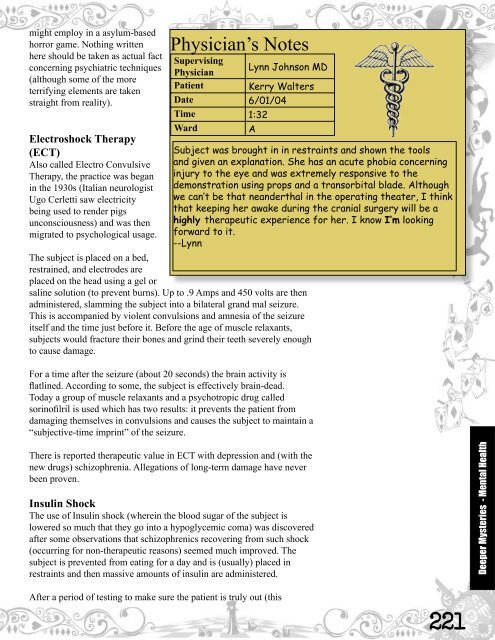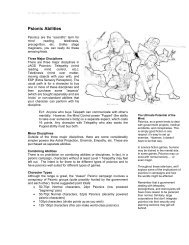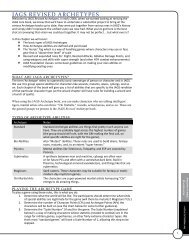Wonderland - Jags
Wonderland - Jags
Wonderland - Jags
You also want an ePaper? Increase the reach of your titles
YUMPU automatically turns print PDFs into web optimized ePapers that Google loves.
might employ in a asylum-based<br />
horror game. Nothing written<br />
here should be taken as actual fact<br />
concerning psychiatric techniques<br />
(although some of the more<br />
terrifying elements are taken<br />
straight from reality).<br />
Electroshock Therapy<br />
(ECT)<br />
Also called Electro Convulsive<br />
Therapy, the practice was began<br />
in the 1930s (Italian neurologist<br />
Ugo Cerletti saw electricity<br />
being used to render pigs<br />
unconsciousness) and was then<br />
migrated to psychological usage.<br />
Physician’s Notes<br />
Supervising<br />
Physician<br />
Lynn Johnson MD<br />
Patient Kerry Walters<br />
Date 6/01/04<br />
Time 1:32<br />
Ward A<br />
The subject is placed on a bed,<br />
restrained, and electrodes are<br />
placed on the head using a gel or<br />
saline solution (to prevent burns). Up to .9 Amps and 450 volts are then<br />
administered, slamming the subject into a bilateral grand mal seizure.<br />
This is accompanied by violent convulsions and amnesia of the seizure<br />
itself and the time just before it. Before the age of muscle relaxants,<br />
subjects would fracture their bones and grind their teeth severely enough<br />
to cause damage.<br />
For a time after the seizure (about 20 seconds) the brain activity is<br />
flatlined. According to some, the subject is effectively brain-dead.<br />
Today a group of muscle relaxants and a psychotropic drug called<br />
sorinofilril is used which has two results: it prevents the patient from<br />
damaging themselves in convulsions and causes the subject to maintain a<br />
“subjective-time imprint” of the seizure.<br />
There is reported therapeutic value in ECT with depression and (with the<br />
new drugs) schizophrenia. Allegations of long-term damage have never<br />
been proven.<br />
Insulin Shock<br />
The use of Insulin shock (wherein the blood sugar of the subject is<br />
lowered so much that they go into a hypoglycemic coma) was discovered<br />
after some observations that schizophrenics recovering from such shock<br />
(occurring for non-therapeutic reasons) seemed much improved. The<br />
subject is prevented from eating for a day and is (usually) placed in<br />
restraints and then massive amounts of insulin are administered.<br />
After a period of testing to make sure the patient is truly out (this<br />
Subject was brought in in restraints and shown the tools<br />
and given an explanation. She has an acute phobia concerning<br />
injury to the eye and was extremely responsive to the<br />
demonstration using props and a transorbital blade. Although<br />
we can‛t be that neanderthal in the operating theater, I think<br />
that keeping her awake during the cranial surgery will be a<br />
highly therapeutic experience for her. I know I‛m looking<br />
forward to it.<br />
--Lynn<br />
221<br />
Deeper Mysteries - Mental Health





